- Elementary, middle For elementary school, junior high schools, and high schools
- High For universities, higher professional schools, etc.
- Q1Can I introduce a newspaper article about my school on our website?
- Elementary, middle
- High
-

Konaka My school's activity was featured in the local newspaper and I would like to introduce it. Can I make a PDF of the full article and post it on my school's website?

Sumiki In such a case, your activities include "reproduction" and "public transmission" and require the permission of the newspaper as the copyright owner. If the article is available on the newspaper's website, it is no problem for you to put a link to the article on your school's website.
- Q2Can teachers involved in the creation of jointly produced teaching materials use them?
- Elementary, middle
- High
-
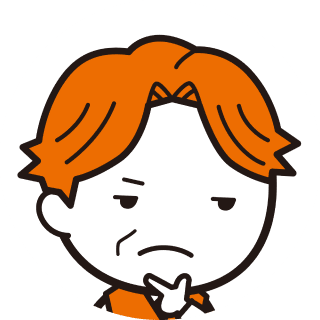
Daiin I've created one material with several class teachers, but some of it is mixed with third-party copyrighted material.
Can a teacher use the material in each of the classes by the teachers who participated in the creation? Do they need permission from a third party?
Sumiki Even if a third party's copyrighted work is partially included, the teacher can use it as long as the requirements for citation are met, so permission from the third party is not required. Also, since everyone is working together to create one teaching material, it is likely to be a joint work, but of course, it will be agreed that each teacher will use it in their class, so there is no problem in reproducing it in each class or making a public transmission in an online class*1.
Memo *1
Article 65(2)
- Q3Can I reproduce copyrighted material and provide it to other teachers?
- Elementary, middle
- High
-

Konaka Can I make a copy of my book and give it to another teacher who teaches a different class?
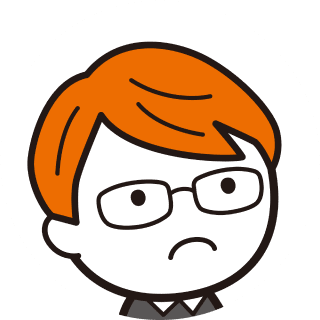
Sumiki Article 35(1) cannot apply unless the teacher, etc. in charge of the class takes the initiative to reproduce the material. Since Dr. Konaka is not in charge of that other class, they need the permission of the copyright owner.
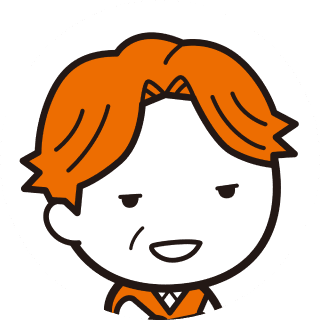
Daiin Then, Dr. Konaka could lend the book to the teacher free of charge, and the teacher who borrowed the book could make a copy.

Sumiki That would be fine*2.
Memo *2
Article 38(4)
- Q4I would like to present essays and reports of graduating students to the class.
- Elementary, middle
- High
-
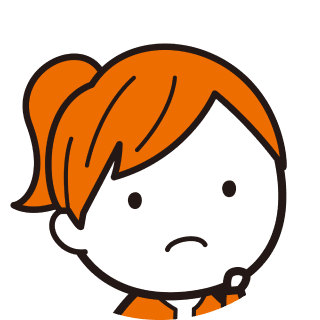
Konaka I would like to use an excellent essay of a graduating student in my Japanese class this year.

Daiin I, too, would like to show the excellent reports of the students in last year's class and hand them out to this year's class.

Sumiki Since Article 35 applies only to published copyrighted works, the permission of the copyright owner (author) is required in both cases*3. You will also need to consider the publication right (Article 18(1)) and the attribution right (Article 19(1)).
Memo *3
In the case of minors under 18 years of age, the permission of a parent or guardian is required (Civil Code Articles 4 and 5(1), main text).
- Q5Can I introduce illegal copyrighted materials in class?
- Elementary, middle
- High
-

Daiin I want to show illegal examples in the class. Like, they're manipulating images of celebrities and uploading them on social media. How can I handle copyrights for illegal stuff?

Sumiki The copyright belongs to the person who took the original photo, and there are issues of privacy rights and publicity rights for celebrities, but as long as the teacher explains how the image is illegal and the requirements of the citation, including the master-subject relationship, are met, the image can be used as the citation*4.
Memo *4
There is no requirement that the citation must be taken from a legitimate source. See Tatsuhiro Ueno, Copyright Guide for Educators and Researchers, Yuhikaku, 2021, p.180.
- Q6Can I show you a film in class?
- Elementary, middle
- High
-

Konaka I have a Netflix subscription, and I would like to show a documentary film on animals to students in my class.

Sumiki If Dr. Konaka uses a projector to project onto a screen, it would be a "public communication" and Article 35 could apply. I would say, however, if you read Netflix's Terms of Use (4.2), you will find that "The Netflix service and any content accessed through the service are for your personal and non-commercial use only and may not be shared with individuals beyond your household unless otherwise allowed by your subscription plan...You agree not to use the service for public performances"*5.
Thus, although there are provisions in the law limiting copyrights, attempts to limit them by contract are called “overriding”, and even experts have different opinions on whether contractual limitations should be valid.
The Forum is currently discussing this issue, and I must say that it is a difficult issue right now due to the risk of violating the Terms of Use.
However, the rules of Netflix also state that some educational original documentaries may be shown only once for educational purposes. Be sure to check the latest Terms of Use.
Memo *5
Netflix, Terms of Use: https://help.netflix.com/en/legal/termsofuse
Educational screenings of documentaries: https://help.netflix.com/en/node/57695
- Q7Can I post videos of my reading of a story to others on the Internet?
- Elementary, middle
- High
-

Konaka I'm talking about a story for children. Can I upload a video of my reading of a story to a web server so that students can watch it from home at any time?

Sumiki That would be the "reproduction" and "public transmission" of the entire story. Therefore, Article 35 cannot apply because it would unreasonably prejudice the interests of the copyright owner.
- Q8Is there a problem if I arrange a piece of music in a way that makes it easier to practice?
- Elementary, middle
- High
-

Konaka Since it is difficult to play an original popular anime song, can the music teacher simply arrange it so that elementary school students can play it as an ensemble with recorders and practice it in class?

Sumiki This can be done without permission, as Article 47-6(1)(i) states that translation, musical arrangement, reformation, or adaptation is allowed when Article 35(1) is applicable.

Konaka Can I play the arranged song at the school concert?

Sumiki You may think that the limitation of rights in Article 38(1) can apply to school concerts because they are non-profit, free-of-charge performances. However, Article 38(1) applies to the use of copyrighted works as they are, and does not apply to musical arrangements (Article 27) (see Article 47-6(1)). Therefore, the permission of the copyright owner is required*6.
Memo *6
For example, it is possible that a very simple change in instrumentation does not add new creativity and does not constitute a "musical arrangement" under the Copyright Act. In such a case, there may be room for interpretation that if the requirements of Article 38(1) are met, the copyrighted work can be performed publicly and does not constitute an infringement of the integrity right.
- Q9I would like to play recorded TV programs during lunchtime.
- Elementary, middle
- High
-

Konaka I would like to play my recorded educational program on the classroom TV during lunchtime.

Sumiki School lunch is a "special activity" as stipulated in the Courses of Study, and therefore constitutes a "class". Recording for teaching is "reproduction" and Article 35(1) can apply. Broadcasting on television is a non-profit, free-of-charge showing, and Article 38(1) can apply*7.
Memo *7
See Tatsuhiro Ueno, Copyright Guide for Educators and Researchers, Yuhikaku, 2021, p.118.
- Q10What should I care about when dealing with foreign copyrighted work in the classroom?
- Elementary, middle
- High
-

Daiin An English teacher wants students to translate foreign novels. How can I help them with foreign copyrighted work?

Sumiki As for foreign copyrighted works, Japan is a signatory to treaties such as the Berne Convention, the Universal Copyright Convention, and the TRIPS Agreement, and is obligated to protect copyrighted works from most countries in the world*8.
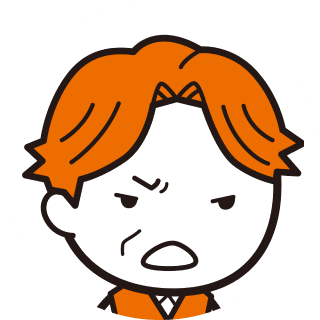
Daiin I don't know about foreign laws!

Sumiki No problem. The Japanese Copyright Act applies when handling foreign copyrighted works in Japan.
A teacher's copying of a novel for distribution to students to the extent necessary for translation is a "reproduction" and "translation" under the Copyright Act.
If a teacher makes copies to the extent necessary, reproduction is OK because Article 35(1) applies, and translation by students in class is OK under Article 47-6(1)(i).
Memo *8
Neighboring rights also have treaty protection obligations under various treaties.
- Q11What should students care about when conducting a Bibliobattle?
- Elementary, middle
- High
-

Daiin Students want to hold a Bibliobattle* at a school festival. Is there any problem with the Copyright Act?

Sumiki A university festival is not a "class" according to the definition of "class" in the Guidelines, so Article 35 is not applicable. Introducing the contents in a few minutes may fall under adaptation (Article 27*9) for a summary and recitation (Article 24) for a presentation.
Whether or not the summary is an "adaptation" is difficult to determine because it depends on the extent to which the content of the book is discussed in the presentation. If the essential expressive features of the copyrighted work cannot be directly perceived, the work is not an "adaptation" and permission from the copyright owner is not required*10. This is a case-by-case consideration.
Word
Bibliobattle
Participants are given 5 minutes to introduce what they think is an "interesting" book, and the participants
vote on which book they would like to read the most.
The Official Website of Bibliobattle:
https://en.bibliobattle.jp/
Memo *9
For the definition of "class", please see "Chapter 2, Section 04: Guidelines for Article 35 of the Amended Copyright Act, 'Class to Which Article 35 Applies'".
Memo *10
Supreme Court, June 28, 2001, Hanrei-Ji, No. 1754, p.144 (Esashioiwake Case)
- Q12TA wants to distribute last year's exam questions to students.
- Elementary, middle
- High
-

Daiin The TA* wants to distribute the exam questions they took last year to everyone.

Sumiki Does that mean that past exam questions from multiple classes will be distributed together?
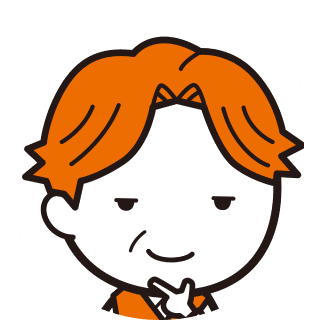
Daiin That's right.

Sumiki That makes Article 35 inapplicable.
Students taking class A may reproduce only to the extent that it is deemed necessary for the study of class A. Furthermore, the teacher decides whether or not reproduction is necessary for the class, and if the teacher decides that the students must study the past questions, only the part related to class A can be reproduced. The TA is allowed to make a reproduction under the supervision of the school, for example, by using the school's equipment.
Or, if the TA shares one of the class sessions as an assistant, they will be a "person in charge of the class", but in this case, only the part of the class A session that they are in charge of can be reproduced.
I would need to get permission to distribute a compilation of past exam questions from classes A, B, C, and D.
Word
TA (Teaching Assistant)
A student who assists in a class.
- Q13Is a student who has not registered for this class considered a "person taking classes"?
- Elementary, middle
- High
-

Daiin Universities have a registration period, and students who are not registered and are provisionally registered can take classes. A student can take the first of a total of eight classes and then not register for the main class. In that case, would that provisionally registered student be considered a "person taking classes" under Article 35?

Sumiki The "class" in Article 35 is a class even if it is only one class, and if you have taken the class properly even once, you would be considered a person taking classes. However, if the class materials include a third party's copyrighted work, it would be better to avoid distributing all eight materials in the first class. It is easy to be judged as exceeding the scope of what is necessary, and it may also unreasonably prejudice the interests of the copyright owner.
- Q14Is there a problem with photocopying my paper and distributing copies to students?
- Elementary, middle
- High
-

Daiin My paper is very informative and I want to distribute it to my students for their reading. No problem, right?

Sumiki If the copyright owner is Dr. Daiin, there is no problem. However, you may have assigned the copyright to an academic society or publisher. In that case, you should be careful. First, check the copyright regulations of the academic society or publisher. In many cases, it will be written for your use.

Daiin It's mine.

Sumiki Many academic journals have regulations such as "Copyright belongs to the Society from the time the final manuscript is submitted to the Society", in which case the authors of the paper do not have copyrights.
Moral rights that cannot be transferred may also be stated, such as "The author shall not exercise moral rights”.
You should check these regulations carefully when submitting your paper.
Even if it is difficult to do so under the regulations of society, Article 32 can apply as long as the requirements for citation are met, and if it is necessary in the course of teaching, Article 35 may apply if it is a part of a paper.
- Q15Can I distribute a whole paper to students?
- Elementary, middle
- High
-

Daiin I would like to have a class in which students read an English paper from beginning to end and present its contents. May I distribute one whole paper to the students?

Sumiki While it is a basic premise that the entire paper is required to be read through, various aspects need to be considered when distributing a whole paper. According to the Guidelines, if the full text of a paper is necessary for a class, it is highly likely that reproduction or public transmission of the whole paper will not unreasonably prejudice the interests of the copyright owner if it is not necessarily reasonable for each student to purchase the paper itself or a collection of papers, considering the following factors:
- If the paper or collection of papers is readily available.
-
If the paper has been published in a book of papers or other publication.
- Number of papers in all publications.
- The state of distribution of the publication and whether it is intended for the intended audience at the time of the original publication.
- Whether the publication has been in existence for a reasonable period after publication.
- Q16Can I still use the course materials after the enrollment period?
- Elementary, middle
- High
-

Daiin My first-semester class is from April to the end of September, but once October comes, can't I put the course materials on the LMS course any longer?

Sumiki Educational materials containing third-party copyrighted material can only be publicly transmitted on the LMS for the period of the class. The materials should be removed after the period or their settings should be changed so that students cannot access them.
It is difficult to determine when the class period begins and ends, but in the case of universities, it seems safe to assume that the class period lasts until the evaluation of grades and credits is completed.
In addition, in classes that are supposed to be taken in stages, such as "Exercise 1" and "Exercise 2", it would fall within "in the course of class" to allow students to view the material from Exercise 1 during the class period of Exercise 2 as well*11.
This is because the Guidelines state that preparation and review are also "in the course of classes", and if there is a content relationship between Exercise 1 and Exercise 2, then the materials for Exercise 1 are equivalent to those for review.
In addition, as explained at the end of "Chapter 2, Section 04: Guidelines for Article 35 of the Amended Copyright Act", the possibility of continued use of educational materials outside the period of a class is under consideration to be covered by the SARTRAS License*.
Memo *11
See Tatsuhiro Ueno, Copyright Guide for Educators and Researchers, Yuhikaku, 2021, p.55.
Word
SARTRAS License
As of November 2022, the SARTRAS licensing system is being considered to allow the use of copyrighted works that
are not covered by Article 35 and compensation without permission.
This system would allow reproduction and
public transmission beyond the scope of compensation by paying a license fee. The scope and form of use are
still under consideration.

